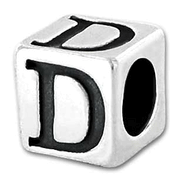SAT. Those three letters have instilled fear in the hearts of college-bound seniors for decades. The Scholastic Aptitude Test is the most commonly used exam for measuring academic ability and suitability for a college’s degree programs and a good score on it can garner recognition, acceptance and even scholarship money. While poor performance on the SAT does not automatically disqualify you from being a first-rate college candidate, it certainly won’t enhance your application package. The SAT has a reputation for being academically challenging, but if you have successfully navigated four years of high school level coursework there is no reason to think that you won’t be able to beat the test.
The Scholastic Aptitude Test is a paper-based test that assesses skills in four basic academic areas: vocabulary, reading comprehension, writing and math. It is typically taken during either the spring of junior year or fall of senior year. Scores on the SAT range from 200-800, with 800 being a perfect score. Although the SAT can be re-taken any number of times, scores from previous tests will follow you and appear alongside more current/ better test scores. For this reason, it pays to put forth your best effort the first time around.
Passing the SAT with flying colors is about more than just smarts. It also requires excellent problem-solving skills. Using smart test-taking strategies will greatly enhance your score. Experts offer the following tips for preparing to do your best on the SAT.
- Learn all you can about the test and practice. There are numerous review books, computer programs and websites that can help you to prepare for the SAT. If you are still in high school, more than likely your library or counselors' office have copies of review books. Take practice exams if possible.
- Set aside regular time to study and stay on task. Remove yourself from temptations such as the computer if you find that you get distracted from studying.
In addition to preparing for the exam, you should review test-taking strategies to help you out on test day. One of the number one mistakes that students make is not keeping track of the time! Before beginning the test, skim the section that you are working on and immediately answer the easiest questions. If you run out of time, you don’t want to lose points on questions that you knew the answer to.
The SAT differs from many other standardized exams in that it has a ‘guessing penalty’, meaning that you lose points for incorrect responses. Only guess on a question if you think that you can eliminate at least one answer as obviously wrong. The questions at the end of the test section are the hardest, and are only answered correctly about 10% of the time, so don’t feel too badly if you have to leave a few blank. If you have extra time at the end of the test, go back over what you have already done, particularly the ‘easier’ questions at the beginning. Be certain to read the questions carefully and thoroughly- it is easy to lose points over careless mistakes.
Although the SAT is challenging, with preparation, you stand to do very well on it.
